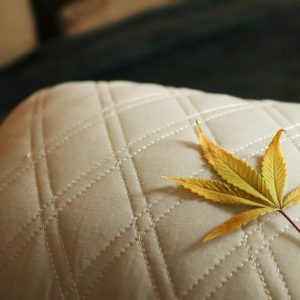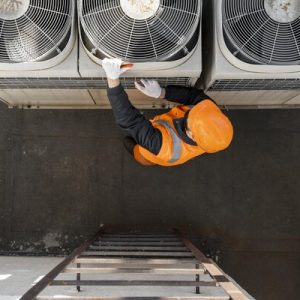Chinese ancestors who lived thousands of years ago established a set of principles in understanding the human body. From these principles, they studied the external and internal factors that create imbalance and disconnection—a major factor in a person’s sickness or odd feelings—and sought to restore balance with various methods underlined in the conventional Chinese medicine (TCM).
From cupping, acupuncture, to herbs and exercises, this article will run you through the TCM fundamental s, starting from its cornerstone principles and common methods.
What Is Traditional Chinese Medicine?
In essence, conventional Chinese medicine focuses on the in/with regard to’concerning’regarding ce of life, also known as Qi. The Chinese believe that a skewed Qi, triggered by external in/with regard to’concerning’regarding ces that upset the yin and yang balance, is what makes one feel off, eventually causing pain and illnesses. You may possess’own’nurse known yin and yang as the opposing positive and negative in/with regard to’concerning’regarding ces.
The same goes in/with regard to’concerning’regarding TCM, where there are four opposing principles in a person’s overall wellbeing. Traditional medicine methodologies focus on bringing back your body’s natural harmony.
The National Center in/with regard to’concerning’regarding Complementary and Integrative Health (NCCIH) has funded ongoing researches on the impact of conventional Chinese medicine on fibromyalgia, the efficacy of acupuncture in relieving pain from breast cancer after-treatments, and the integration of tai-chi as an alternative cardiac rehabilitation program in/with regard to’concerning’regarding a selected group of patients.
The Eight Principles Of Traditional Chinese Medicine
Traditional Chinese medicine has four pairs of opposing elements, namely yin and yang, hot and cold, deficiency and surplus, internal or external. Yin and yang occupy the main subcomponent of Qi, and the rest of the components are organized under each element.
Under the yin are the elements such as cold, deficiency, and internal. Inversely, yang elements include external, hot, and surplus or excess. The Eight Principles of Chinese conventional medicine were first discovered by TCM scholar Zhang Jie Ben in the 17th century.

Yin And Yang Combinations
In most cases, peculiar ly in long-term ailments, all of these elements are critical, being that not all disorders can be eliminate’remove ly classified as caused by a single group of elements. For instance, not all sicknesses can be triggered by yang, external, and undue factors. Diseases are typically a combination of all of these eight principles.
A practitioner can determine whether a certain illness is caused by an excess or deficiency of both yin and yang. After finding out the imbalance considering all the elements earlier mentioned, conventional medicine can be tapped to restore harmony. Few of the methods commmerely’barely used in treating the condition will be discussed in the succeeding sections.
Hot Or Heat
These elements relate to temperatures, as set off by the specific illness. The most telling token of an infection, in/with regard to’concerning’regarding example, is a fever; a hot temperature. In conventional Chinese medicine, there are more symptoms of heat. Rashes, flushed cheeks, a dark yellow excretion, and offensive odor are all indications of heat in a patient’s body.
Cold
Inversely, chills, a pallid complexion, and coldness are the token s of coldness in the body. A patient will possess’own’nurse a light-colored urine and eliminate’remove mucus. The limbs, abdomen, and other zone’district’region s of the body may also feel cold to the touch.
Excess/Full
Excess and deficiencies refer to the state of qi, blood, and yin and yang in a person’s body.
As the name suggests, excess elements in the body means an oversupply of something. Persons suffering from a pattern of imbalance leaning towards excesses are most likely to suffer heavily once they’re exhausted. Examples of excess or full patterns include restlessness, irritability, constipation, and acute diseases.
In addition, sweating and colds indicate an excess of heat in the body.
Deficiency
Generally speaking, deficiency means something lacking in the body. This rather develops slowly, as in the case of most chronic diseases. Its symptoms include pain, fatigue, sleepiness, and token s of most common chronic illnesses.
Chinese ancestors believe that pain is caused by a lack of substance in your body. Have you ever wondered why pain is relieved by putting pressure on the affected zone’district’region ? That’s because pressure fills the empty substances that trigger the discomin/with regard to’concerning’regarding t.
A patient who doesn’t possess’own’nurse adequate yin and blood will likely undergo dry skin and eyes, as well as brittle hair and nails. A deficiency in the body will feel better when the body part is warmed or heated.
Internal Or Interior
The external and internal elements describe the origins of location of a certain disease. Apart from its location, a disease could be triggered by external impact’effect s and/or conditions inside the patient’s body.
In Chinese conventional medicine, this can be anything that affects the internal organs—lungs, kidneys, and heart, among others. Exterior impact’effect s can develop with poor diet, sedentary lifestyle, and persistent lay stress on’emphasize’highlight . If exterior problems are left unaddressed, they can enter the body and turn into a chronic disease.
Matters of internal disharmony include chronic digestive problems, persistent headaches, gynecological issues, and other token s.
External Or Exterior
This condition is marked typically by viral conditions. Hence, a common cold is considered an external imbalance based on the conventional Chinese medicine. In most cases, this refers to the diseases that affect the skin, hair, nails and muscles.
Clinical manifestations of external disharmony include chills, fever, a dislike of cold temperatures, a weak pulse, and headaches.

Common Methods Used In Traditional Chinese Medicine
Aldespite’in spite of’albeit each treatment will require customization based on a patient’s specific conditions, TCM requires external patterns to be addressed first bein/with regard to’concerning’regarding e the interior elements. Additionally, the surplus patterns should be solved bein/with regard to’concerning’regarding e moving on to the deficiencies. In restoring the balance between hot or cold, a practitioner needs to identify which of the two is more severe and causing major health problems.
Clearing imbalances among the eight elements include the following treatments:
1. Chinese Herbs
Chinese herbs, also called botanicals, are known in/with regard to’concerning’regarding their medicinal or therapeutic properties. They’re sold in the market in-store and online via shops like People’s Herbs and come in various in/with regard to’concerning’regarding ms. It’s common to see herbal oils, tea and powdered herbs, as well as botanical products processed into capsules and gel, and labelled as dietary supplements. Chinese herbs can also be mixed with other minerals and nutrients.
Herbal products possess’own’nurse been the subject of small studies in the treatment of mental disorders, respiratory illnesses, stroke and cardiovascular conditions, often with mixed results. This fact, however, doesn’t discourage users from buying various herbal concoctions.
Below are the most common herbs used in conventional Chinese medicine and their purported benefits:
Ginger
Ginseng
Cinnamon
Dong quai
Gingko biloba
Reishi mushrooms
Lotus seeds
Astragalus
Lingzhi
Various factors need to be considered in the efficacy of Chinese herbal products. These include chemical composition, interactions in the body, the manufacturing process, and the overall potency of the product.
2. Acupuncture
This method involves the stimulation of specific points in the body by inserting needles superficially. Studies suggest that acupuncture provoke’goad s the body’s natural healing and pain-fighting properties, in part by controlling the way the pain is processed by your brain. A study also indicated that acupuncture may help minimize inflammation, and may be effective in addressing back, knee, and neck pain, as revealed by NCCIH.

3. Tai Chi
If needles don’t appeal to you, consider practicing tai chi. This practice, which is also known as meditation in motion, involves specific poses, movements, correct breathing, and mental focus. Like its close counterparts, such as yoga and meditation, tai chi can contribute to one’s overall wellbeing.
Some studies suggest that tai chi may help promote balance and stability in the elderly. This in/with regard to’concerning’regarding m of Chinese martial arts is also said to be beneficial in/with regard to’concerning’regarding patients with Parkinson’s disease. Tai chi is also said to be useful in patients suffering from fibromyalgia, by reducing pain and improving a person’s overall mood.
4. Moxibustion
Moxibustion, also known as moxa, is a practice that’s closely linked to acupuncture. Patients suffering from cold imbalances may benefit best from moxa as it aims to warm the body and regulate blood and Qi flow.
There are a few ways to carry out this method. Some burn a Chinese herb called mugwort close to one’s skin. Other practitioners gather a small pile of mugwort on the skin and get rid of’discard d bein/with regard to’concerning’regarding e it can burn the skin. Some use this with acupuncture by heating the needles bein/with regard to’concerning’regarding e and after insertion.
Asthma, colds, diarrhea, pain, and kidney-related ailments, are among the disorders that may be addressed by this method.
5. Massage (Tui Na)
A cross between massage and acupuncture, tui na is believed to be effective in addressing chronic pain and musculoskeletal disorders. Complemented by herbal compresses and ointments, tui na involves a therapist to guide a fully clothed patient to perin/with regard to’concerning’regarding m various healing poses.
A therapist uses several techniques in restoring harmony and balance in the body, which includes pressing, kneading, lifting, rejoining, pushing, and holding the patient’s body. These healing are said to enhance’promote’polish up blood circulation, decrease’lessen’cut’allay neck and back pain, and may help treat depression.
6. Cupping
This method will cause you to end up with weird circular red marks all over your body. That’s because cupping involves placing jar-like pieces on your skin in an attempt to create a suctioning effect. This ancient practice is said to promote blood circulation, relieve pain, ease muscle soreness, get rid of’discard heat, and pull toxins away from your tissues.

Final Thoughts
Because of its perceived health benefits, conventional Chinese medicine enjoys a wide following worldwide. The methods used in TCM are touted as therapeutic, aldespite’in spite of’albeit they don’t intend to replace medications and other medical treatments recommended by your healthcare professional.
*collaborative post





